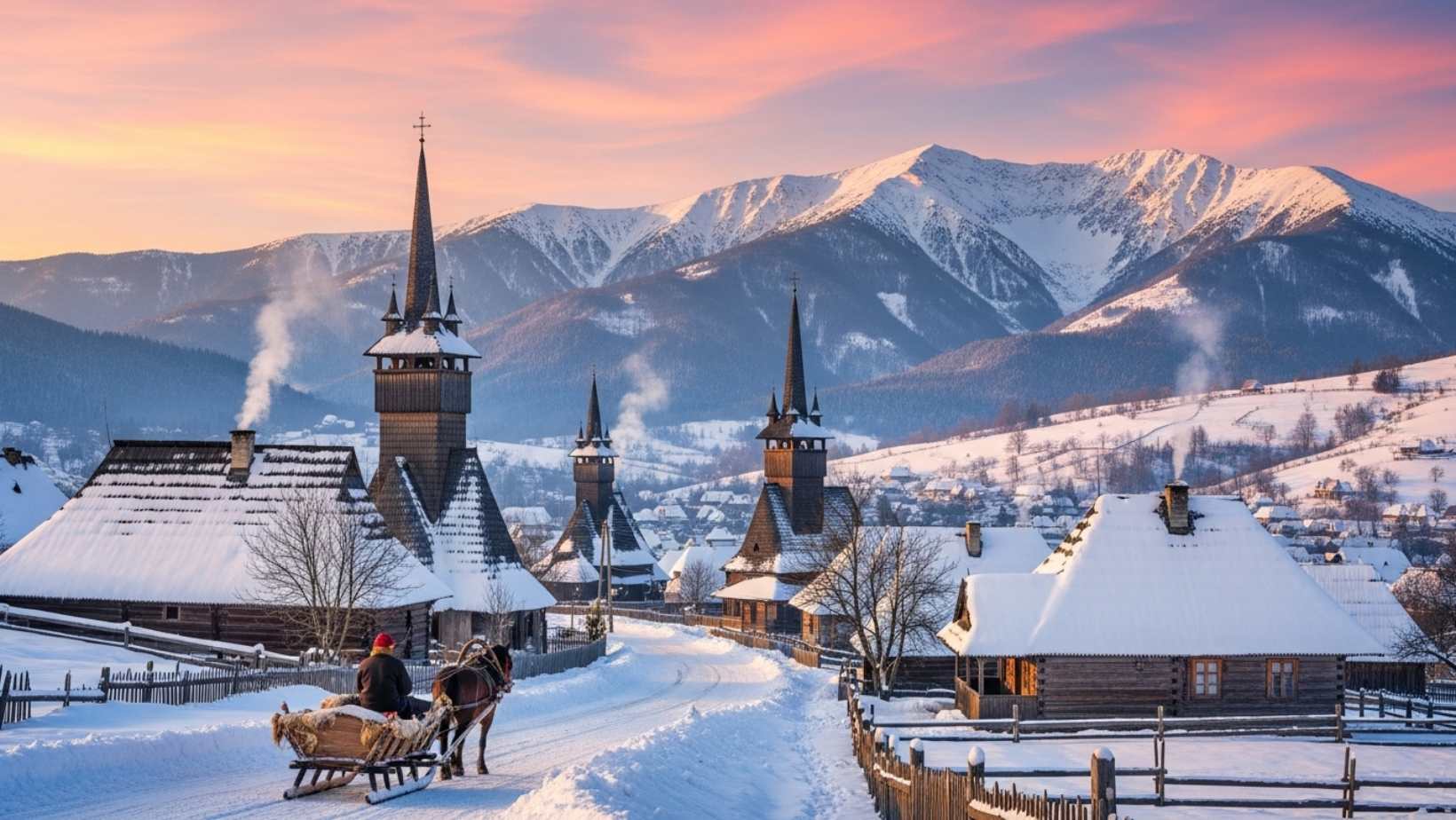While commercial winter destinations charge €500 per night for manufactured “authentic” experiences, a cluster of Romanian villages maintains centuries-old traditions that have survived without interruption since medieval times. Here, horse-drawn sleighs aren’t tourist attractions—they’re how locals transport firewood and visit neighbors through snow-packed lanes.
The Maramureș region operates on rhythms unchanged since the 1300s, where villagers still wear handmade wool costumes not for festivals but for warmth, and where Christmas customs follow patterns their great-great-grandparents would recognize instantly. I discovered this during a February visit when temperatures dropped to -15°C, and the wood-burning stove in my farmhouse accommodation became my closest friend.
The smell of burning oak mixed with fresh bread baking in outdoor ovens creates an olfactory experience that defines winter here. Unlike Brazil’s protected coastal villages, these mountain communities face different preservation challenges—keeping traditions alive while remaining economically viable.
You’ll witness daily life unchanged since the Middle Ages
Every morning around 7 AM, you’ll hear the distinctive sound of horse hooves on frozen ground as farmers begin their rounds. These aren’t staged demonstrations—locals genuinely depend on horse-drawn sleds for transportation between November and March when snow makes modern vehicles impractical on narrow village lanes.
The wooden churches that dot the landscape feature spires reaching toward gray winter skies, their architecture representing a building tradition that predates most European cathedrals. I watched an 80-year-old carpenter repair one church using techniques passed down through seven generations of his family, working with hand tools that looked like museum pieces.
Women gather in community centers to spin wool and embroider traditional patterns onto vests and skirts, garments they’ll actually wear to Sunday services. The patterns indicate which village someone comes from—a visual language that outsiders rarely understand but locals read instantly.
You’ll experience winter festivals that haven’t been commercialized
Between December and February, villages host celebrations that follow pre-Christian customs blended with Orthodox traditions. The winter solstice festivals involve masked dancers representing bears and goats—performances that anthropologists trace back to Dacian rituals from before Roman conquest.
During Christmas week, carolers visit every household singing ballads in archaic Romanian dialects that linguists study for their historical significance. They’re rewarded with homemade țuică (plum brandy) and cozonac (sweet bread), following hospitality customs documented in 16th-century manuscripts.
Unlike the manufactured atmosphere of commercial winter destinations, these festivals happen whether tourists attend or not. I joined a January celebration where I was the only outsider among 200 villagers—an experience more authentic than anything similar to Sweden’s fika culture could offer.
You’ll stay in farmhouses that define authentic rural hospitality
Accommodation here means staying with families in working farms where the wood-burning stove serves as heating, cooking surface, and social center. My host family raised sheep, made their own cheese, and distilled brandy from their orchard’s plums—all activities I participated in during my stay.
Morning breakfast featured mămăligă (cornmeal porridge) with fresh sheep cheese and sour cream so thick you could stand a spoon in it. The chickens wandering through the yard provided eggs gathered minutes before cooking. This wasn’t curated farm-to-table dining—it was simply how people eat.
Evenings involved sitting around the stove while my host grandmother recounted village history spanning 90 years of her life. She remembered when German soldiers passed through in 1944, when the communists collectivized farms in the 1950s, and when the first tourists arrived in the 1990s. Her stories provided context no guidebook could match, similar to the cultural preservation efforts in Vietnam’s multi-cultural cities.
The Maramureș region offers something increasingly rare—winter traditions maintained not for tourists but because communities value their heritage. Between November and February, when snow transforms the landscape and temperatures hover around -10°C, these villages provide genuine immersion into medieval winter customs that Lapland’s commercial operations can only simulate.
